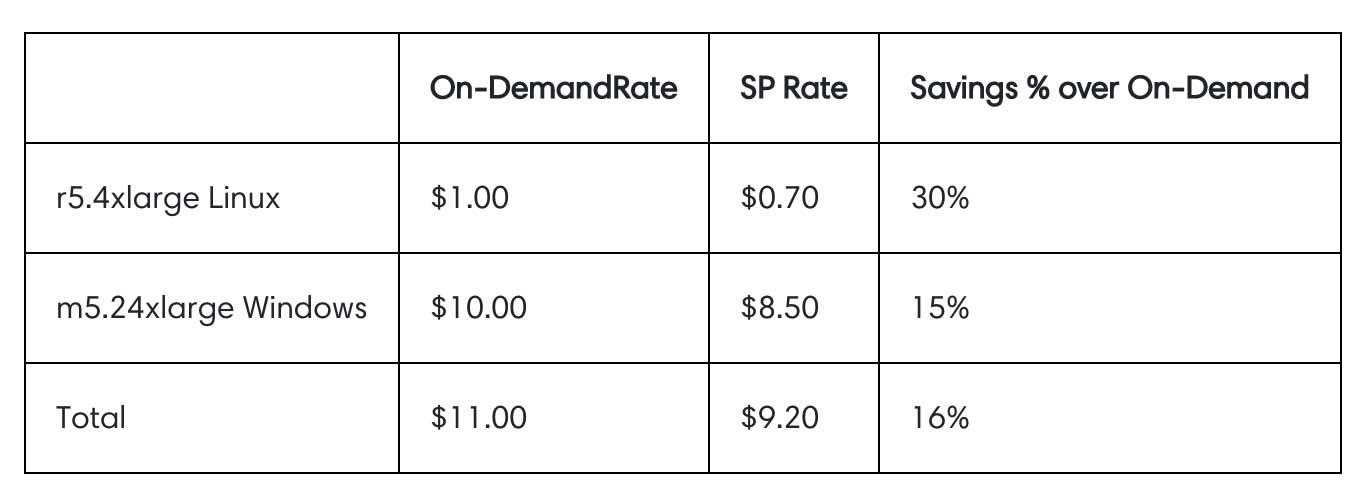Blog
Comparing AWS Savings Plans and Reserved Instances
AWS recently introduced a new pricing model called Savings Plans (SP) that gives customers a significant discount on their on-demand Amazon EC2 usage over a 1 or a 3 year period. Sound familiar? If yes, that is because AWS offers another pricing model called Reserved Instances (RI) that provides significant discounts over your on-demand compute usage too.
However, there are a few major differences with SPs you should know about. RIs, while extremely useful, did have their drawbacks and could sometimes leave customers not savings as much as originally thought.
Automated Coverage
One of the biggest challenges with RIs is you constantly need to monitor their usage to make sure they are always being applied. For example, if you purchased a t2.small RI and a developer later upgraded the instance where that RI was being applied, that RI would become orphaned until a change to the RI itself was made. Without good governance or automation in place, you risk not breaking even on your investment.
With SPs, one of the key features is coverage is automated. In other words, you can change your instances as needed and the SP (depending on the plan and change you make, see SPs options below) will automatically adjust in background providing you self-activating coverage throughout the term.
Extra Flexibility
Another major shift from the RI model is the ability to go cross-region. When you enable RIs in a specific region, the benefits of those RIs could only be applied to the region they were purchased. This also increased the risk of orphaning RIs.
The benefit is not limited by Region when it comes to SPs. In other words, if I move an instance from Virginia to Oregon, the SP benefit will persist. Note, Beijing and Ningxia are not eligible regions at the time of this writing.
Going Serverless
Lastly, SPs not only support Amazon EC2, but they also provide discounts on Fargate. Fargate is a serverless compute engine for containers. This is something that is not available today with RIs.
How do Savings Plans Work?
SPs are basically spend commitments that allow you to make long-term dollar per hour commitments in order to obtain lower rates. For example, if you have two instances running on-demand, you can commit to $9.20 of compute usage an hour and that commitment will cover all your instance usage in order to gain the Savings Plan rate. This dollar per hour approach further normalizes your usage so you can make changes to existing instances without losing the savings benefit.

When exploring SPs, there are two options available to you: Compute SPs and EC2 Instance SPs. As AWS describes:
Compute Savings Plans provide the most flexibility and help to reduce your costs by up to 66% (just like Convertible RIs). The plans automatically apply to any EC2 instance regardless of region, instance family, operating system, or tenancy, including those that are part of EMR, ECS, or EKS clusters, or launched by Fargate. For example, you can shift from C4 to C5 instances, move a workload from Dublin to London, or migrate from EC2 to Fargate, benefiting from Savings Plan prices along the way, without having to do anything.
EC2 Instance Savings Plans apply to a specific instance family within a region and provide the largest discount (up to 72%, just like Standard RIs). Just like with RIs, your savings plan covers usage of different sizes of the same instance type (such as a c5.4xlarge or c5.large) throughout a region. You can even switch from Windows to Linux while continuing to benefit, without having to make any changes to your savings plan.
Should We Stop Buying RIs?
We’re not and we’re finding customers aren’t completely moving away from RIs either. While SPs provide significant improvements over some aspects of RIs, there are certain things RIs can do today that SPs cannot.
For example, Standard RIs can be sold in the AWS Marketplace (with a fee) if they are no longer used. With SPs, you are committed to paying for the Savings Plan throughout the term regardless of actual usage.
Convertible RIs, on the other hand, allow you to get creative and make exchanges as your usage needs change. For example, customers with seasonal spikes may exchange Convertibles RIs with 3 months left on them in order to increase their coverage during the season. This enables significant short-term savings, but without the long-term commitment. This is also something that can’t be achieved through SPs.
For now, we anticipate customers will take a hybrid approach to reservations - leveraging SPs for baseline usage, and RIs where there is chance for variability.
Are There Other Options?
SPs and RIs aren’t for everyone. Depending on the workload, Spot Instances may be a better choice. For example, Spot instances are ideal for temporary, flexible workloads such as big data and high-performance computing.
If you are looking for the benefits of SPs or RIs, but without the long-term commitment or management burden, there are partner solutions you can take advantage of. For example, Mission has a program called Reserved Instances Optimization (RIO) where we buy and manage reservations on your behalf to give you greater optimization and savings, but without the financial risk.
Learn More
Whether you are interested in SPs, RIs, Spot, RIO, or a different AWS topic, Mission is here to help. As a Premier Consulting Partner and MSP, Mission has a wide range of services and expertise to help you along your cloud journey. We can easily be reached via our website or you can schedule a free consultation with us to validate your plans or seek additional guidance based on your use case.
Author Spotlight:
Alex Beal
Keep Up To Date With AWS News
Stay up to date with the latest AWS services, latest architecture, cloud-native solutions and more.

